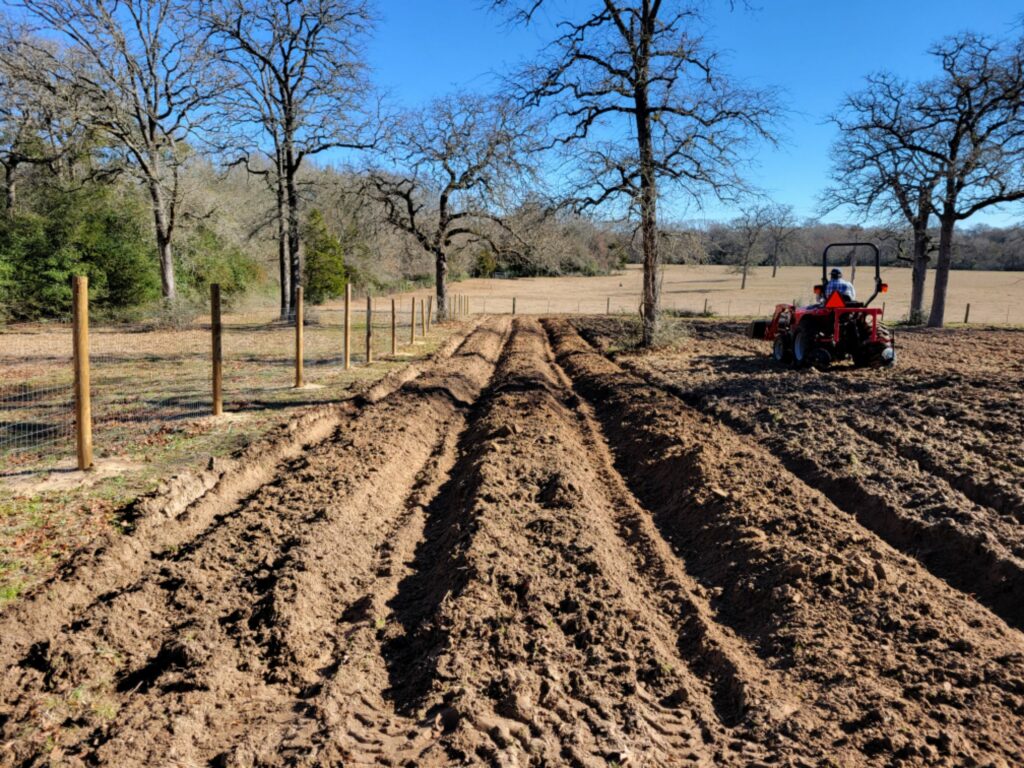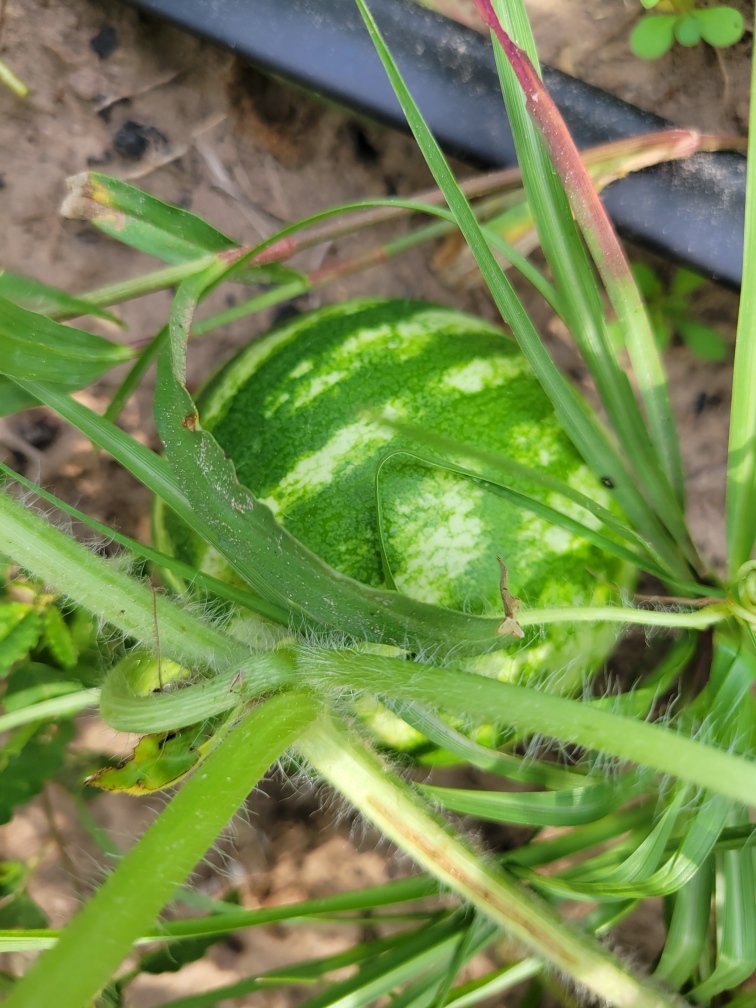With the Breaking Into series we will explore US agriculture, the least complex, the most complex, the failures, frustrations, sustainability, costs, and future of each topic that makes up modern agricutlure. On this episode we are going to explore a more complex, yet still small, system of farming for profit, Small Plot Farming. Small Plot Farming in a name can seem inadequate, small, not useful in the bigger picture of global agribusiness, but in a micro economy, small farms have huge impacts. Small scale is not small at all. A three acre plot of land can fee hundred of community members. An acre of tomatoes can net a farmer a significant five figure revenue. One decent plot of watermelons can push the farm to a six figure retail contract with a
Topics:
Michael Smith considers the following as important: Education, Michael Smith, small business, US agriculture, US/Global Economics
This could be interesting, too:
Joel Eissenberg writes How Tesla makes money
Angry Bear writes True pricing: effects on competition
Angry Bear writes The paradox of economic competition
Angry Bear writes USMAC Exempts Certain Items Coming out of Mexico and Canada
With the Breaking Into series we will explore US agriculture, the least complex, the most complex, the failures, frustrations, sustainability, costs, and future of each topic that makes up modern agricutlure. On this episode we are going to explore a more complex, yet still small, system of farming for profit, Small Plot Farming.
Small Plot Farming in a name can seem inadequate, small, not useful in the bigger picture of global agribusiness, but in a micro economy, small farms have huge impacts. Small scale is not small at all. A three acre plot of land can fee hundred of community members. An acre of tomatoes can net a farmer a significant five figure revenue. One decent plot of watermelons can push the farm to a six figure retail contract with a major brick and mortar. But small plot scale and hiring labor can be tricky.
Going it alone is always one of those things to do, albeit difficult. If you are a full time farmer, sure, but your expenses have got to be bottom of the barrel low. This means a significant reduction in debt, and not taking on any new debt. This also means reorganizing your entire life, not going to town, growing your own food in a garden. You will be strapped to the land whether you like it or not. Your vacation is farming, your pleasure and passion, the land you farm.

One to three acres being done by a young couple with limited debt is the easier path. Older folks with kids can be difficult when the children are young. This isn’t 1911 when the children had nothing better to do than pick eggs from the chicken coop and help dad plow with the draft horse. Kids have school, friends, social connections, t.v., internet, books, movies, etc. The older they are the more useful they can be but turning your family into the farm labor is a hard way to grow up. Teenagers will thrive if they have a passion to work and are given the freedom to create and problemsolve on the farm. One day this land will be theirs, and the life skills learned in adolescence from the farm are not only quantifiable, but necessary. Letting one come to farm organically is the best way to cultivate a passion for the work.
So what does a three acre multicrop farm look like? Well, you have to first work the land, prep the soil, scale from a market garden to 100-200 foot beds of the same cultivars. Fertilizer and crop rotation is key. Be cognizant of the fact that some cultivars will not do that great next to others. Corn varieties struggle when planted next to one another. Remember the three sisters. Diversify, and remember, plant what you will eat, not what you think people will buy.
A two or three acre field can do well at farmers markets, or local produce stands. If looking for a retail contract, pick one crop and learn to grow it consistently well.
Complexity
We view nature and the environment as these complex spheres moving in tandem as not to collide. A solar system dancing in the ether with perfect balance and form to create the great wonder. When you sit and break the universe down to a head of cabbage, it’s actually rather simple. Get a good seed going in some soil, add water or rain and sunlight. All of the sudden, a plant has emerged and with the rosurces provided, creates an edible plant. Now, we can get a little more scientific into the process, but those lessons are learned in gardening, and should be mentally reliable once a small plot farm is being worked. The complexity in the basics is merely going from one cabbage plant to 200. Everything takes longer in labor hours, the costs are significantly more. One season seed order can run $500+ dollars, seed trays, seed soil, irrigation supplies, fertilizer easily another grand. Before even getting started you may have racked up direct expenses of potentially $2,000 before even getting a seedling to emerge.
Monocropping is by far easier. Once learned what the specific cultivar needs, replication is relatively easy. Soil test will give you what’s lacking and can be amended by fertilizers and compost. Observation will inform on pest load and fencing, plant type, and chemical can be explored to mitigate the risks.
Water will always be an issue. Either it’s too much, not enough, or large stretches between rain that complicate any growing operation. The sun shines nonetheless.
Sustainability
Any operation should focus on quality over quantity and respect for the land will go a long way. Consistently composted soils use less fertilizer, hold more moisture, and produce a better crop year after year. Tilling in plant material, adding manure from cattle feedlots, food waste, whatever, just get the organics into or onto the ground. If using fresh manure, let it age. Bacteria will breakdown the unsavory parts of compost. A well composted field is not only a productive one, but one that also helps put carbon back into the ground and builds back topsoil.
One rule we have on the farm:
“It’s about making a living, not making a killing.” – Dr. Temple Grandin
Frustrations and Failures
The amount of work required to tend to a two acre farm will surprise you. One person can handle that amount with proper equipment, which gets expensive quickly.
Farmers tend to do well with the actual farming but despise the marketing side of things. Trying to sell wares takes the farmer off the farm. Contract growing is hard to come by and can be hit or miss depending upon who the contract is with and for. Most small plot monocrops have trouble keeping up with a large grocery store contract. The other markets have zero concrete and can’t be counted on for steady income. Growing two acres of watermelons is a feat of its own, marketing the thousands of pounds of harvest before it all goes bad is something even larger farms struggle with.

The failure comes usually at the juxtaposition of feeling over worked and not making a decent return. Money and exhaustion usually is the one two punch that taps people out of the industry. Perseverance over doing something difficult can be rewarding.
Costs and Future
The costs vary widely on what the farmer entends to grow. Watermelons will need a trailer and a way to haul the product to market. Some crops have to be kept cool in a cold storage facility. Equipment to work the land. Equipment to seed, rake, mow, move compost…a tractor is a handy tool.
All told, getting started with seeds and supplies is ~$2,000. A small compact tractor with a category 1 back end setup and loader bucket will run about the same as a small car, financed around $300 a month. A cold storage facility can either be built ($5,000), refit a large closet ($2,000), or for dual purpose, refit a box style trailer as cold storage ($7,000 approx.). Each implement for the tractor will have to be purchased, a rotary cutter deck to mow and a disc harrow to turn over the first six inches of soil and turn in the dead plant material is an absolute minimum.
The future is exciting. As economics and climate change, the realities of shipping food from thousands of miles from other countries or across our own country becomes unsustainable. A bad storm can knock logistics out of whack, a crop failure due to drought can introduce scarcity. Political instability causes lack of supply. The reality is that globalization of food does not have a long term feasibility. As such, and the USDA has eluded, food is growing local. The more farms we have closer to mass populations, the more those populations become reliant upon those farms. Right now there aren’t enough farms to supply a decent sized city. The masses have become privy to the realities of complex supply chains and more folks are seeing that farming can be a profitable business. With time, the future looks bright.
